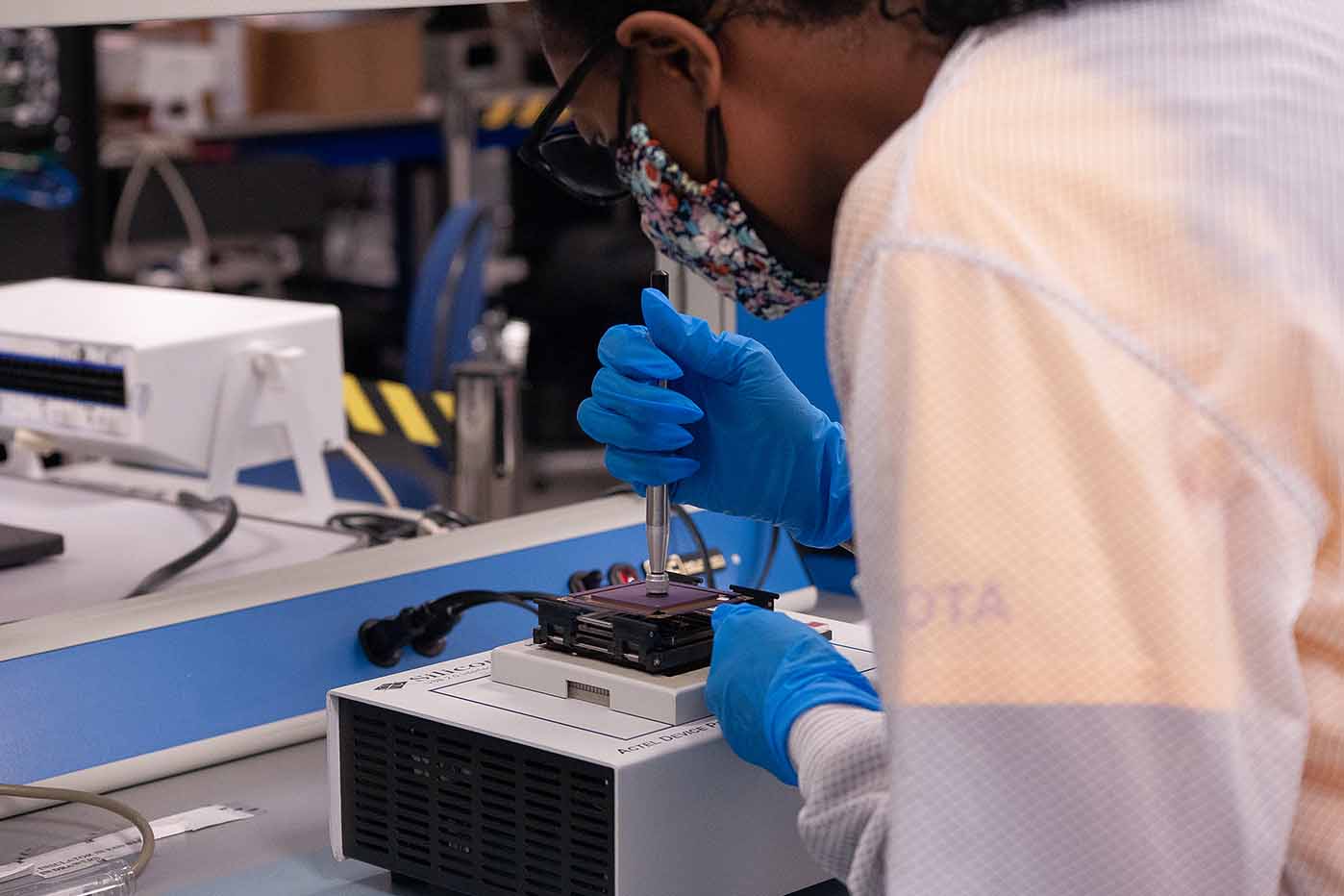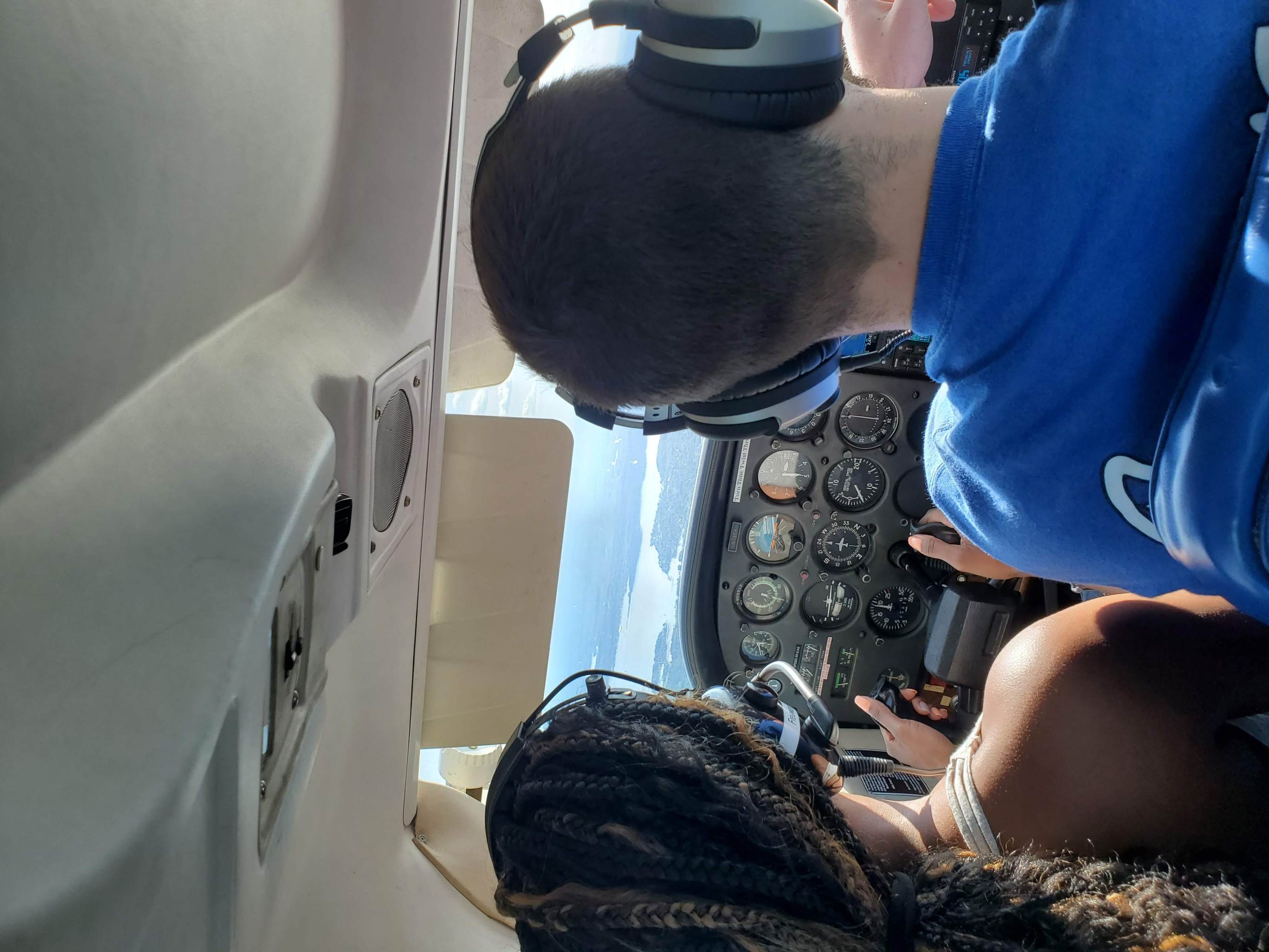Name: Sanetra Bailey
Title: Electronics Engineer
Organization: Code 564, Instrument Electronics Development Branch, Electrical Engineering Division, Applied Engineering and Technology Directorate
Sanetra Bailey has worked at NASA Goddard for 10 years. Her role has expanded over time, shifting from designing digital circuits for robotic satellites to large observatories – including NASA’s next flagship astrophysics mission, the Nancy Grace Roman Space Telescope. Among its many cosmic pursuits, this mission will explore the nature of dark energy and dark matter and hunt for planets beyond our solar system.
What does your work for the Roman Space Telescope involve?
As a computer engineer, I design custom digital circuits for Roman’s electronics. I am currently working on part of the telescope’s avionics subsystem as a Field-Programmable Gate Array (FPGA) Developer for the Multi-Channel Analog Card. This subsystem is like the brains of the spacecraft, driven by software to provide commands and controls. My FPGA is responsible for collecting and interpreting the commands, health and status, and housekeeping information. It will tell the spacecraft how and where to move so astronomers can point to the cosmic objects and phenomena they want to look at.
Have you had a standout experience or opportunity in the past decade or so?
I’ve had two outstanding experiences in the air: skydiving and private pilot training. In 2017, I went skydiving in Dubai over The Palm Jumeirah. It was a thrilling sensation that exposed me to the physics behind skydiving. Experiencing the physical interaction between gravity and air resistance was breathtaking, literally. Then two years later (in 2019), I took my first private pilot training. It was a surprise birthday gift that became an exciting goal in my life. My love for traveling keeps me on planes, but I never thought I would want to learn how to fly plane until then.
What is the most valuable professional development experience you’ve had?
Technical Management Training has been the most valuable professional development experience I’ve had. This training gave me a better understanding of how my work fits within the bigger picture. It gave me a broader perspective on NASA Goddard from senior level managers, which encouraged me to seek opportunities in other departments that aligned with my interests. It was also an opportunity to visit NASA’s Wallops Flight Facility on Virginia’s Eastern Shore and learn about their operations and what they do there.
Are there any major challenges you’ve had to overcome, and if so how did you work through them?
Having the opportunity to do both research and development and flight missions is the best part of my career at NASA Goddard. However, it was challenging trying to navigate between the two – especially as it pertained to schedule and working in teams. Research and development efforts are typically done on an individual or small team scale. Flight missions are usually larger teams with multiple discipline interfaces. Everyone has the same goal, but sometimes, it can get lost in communication when issues arise. Therefore, I had to the learn the communication dynamics and refine my skills on conveying my design for others to understand. I also had to enhance my design verification to defend my work, if necessary.
What advice do you have for anyone who’d like to do what you do?
My advice is to do the work required to make it the success you want. Developing custom digital logic is fun but can be challenging at times. Overcoming these challenges may require additional studying, working longer hours, seeking collaboration with others, and more. Keep exploring and trying things, and it’ll work out.
I also encourage seeking a mentor experienced in your interests and goals. I could have read a book about flying an airplane, but it wouldn’t be enough for me to get in a plane for the first time and just take off. Experience is everything and that experience can be learned from others. It’s great to learn from others’ mistakes and successes.
Related Links:
Sanetra Bailey – Uniquely Adventurous Robot Designer
Engineering as a Competitive Sport – Goddard View, Vol. 9 Issue 9
Kamili Jackson – Giving is Paying Back





























